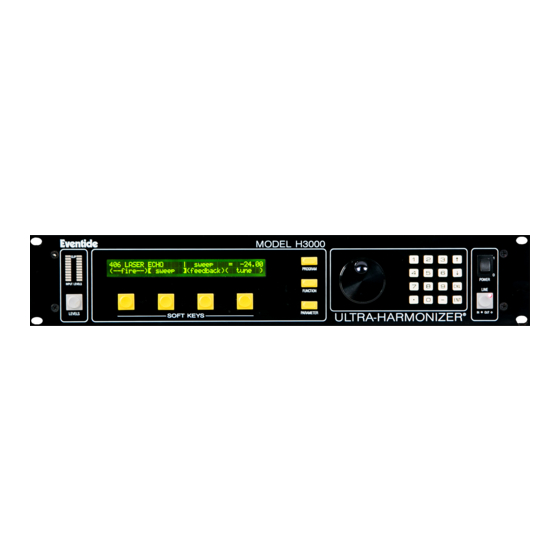
Eventide Ultra-Harmonizer H3000 Series Instruction Manual
Hide thumbs
Also See for Ultra-Harmonizer H3000 Series:
- Instruction manual (184 pages) ,
- Service manual (79 pages)
Table of Contents
Advertisement
Quick Links
e
e
FIRST PRINTING: March 1992
H3000, H3000-S, H3000-SE, H3000-B, 3000-D/SX, H3000-D/SE, H3000-B/LT, H3000-B+, H3500-dfx, H3500-dfx/e MODELS COMBINED
IN ONE MANUAL - January 1996
© 1989 - 1996 Eventide Inc., Little Ferry NJ USA
Harmonizer i s a registered t rademark o f EventideInc. for itsaudiopitch shifterspecial effectsdevices,
e
(O
WA
]
H3000
Ultra-Harmonizer®
INSTRUCTION
MANUAL
Advertisement
Table of Contents














Need help?
Do you have a question about the Ultra-Harmonizer H3000 Series and is the answer not in the manual?
Questions and answers